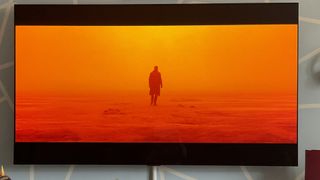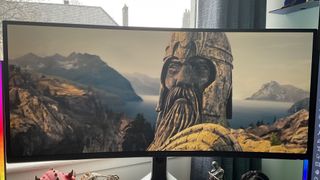It's time for ultrawide 4K TVs to return and save us from black bars in movies
Because 16:9 is so passé

Confession time: I’m one of those weirdos who uses the vertical zoom feature on their TV to conceal black bars when watching movies. Yes, I’m a monster. As someone who despises losing a chunk of screen real estate to strips of darkness, my obsessive eyes are all too ready for 21:9 ultrawide TVs.
Ultrawide monitors have been on the go for years, but the idea of a screen with a 21:9 aspect ratio in the TV space has never really taken off. Other than Philips releasing its legendary (among people like me) Cinema 21:9 LCD TV over a decade ago, the modern television market has never really had a place for non-16:9 displays.
Now admittedly, I’m probably talking to an audience of exactly one here, but this anti 21:9 trend in the home theater space needs to change. If you’re an ardent movie lover, the idea of ultrawide TVs carving out a niche space actually makes a lot of sense.

Easy Wider
Most movies are now filmed in Widescreen Cinemascope format, which equates to a 2.35:1 aspect ratio. With the 21:9 format measuring in at 2.370:1, ultrawide screens are pretty much perfectly placed to show movies in the manner directors intended.
The above numbers would probably make even Sesame Street maths whiz (and presumed part-time bloodsucker) Count Von Count’s head explode. Yet the emergence of 21:9 TVs would have an immediately appreciable effect: they’d kill black bars stone dead.
I can’t fully state just how much I hate looking at those horizontal bars of despair on a 16:9 display when watching my favorite films. Having owned some of the best OLED TVs for the best part of a decade, I’m inherently scarred with burn-in paranoia – any static image gives me the heebie-jeebies. While there’s no real evidence black bars actually cause burn-in on OLED screens, they still stop me from being fully immersed in a movie.
Most LG TVs, including my LG C2 OLED, let you tweak the aspect ratio of on-screen content via a vertical zoom option, but not all brands are so accommodating. I’ve owned the odd Sony screen down the years, and their lack of a proper zoom feature has led me to some rash purchases. I bought the Oppo UDP-203 a few years back, not because it was one of the best 4K Blu-ray players of the time, but because it had an advanced zoom feature that let me exterminate black bars.

Zoom with a view
My ultimate black bar blocking nadir? Using my TV’s ‘All Directional Zoom’ feature to stretch out Zack Snyder’s Justice League. When you’ve seen a 4:3 version of Darkseid’s (already meaty) forehead stretched out to fill 77-inches of a 16:9 screen, there’s no wiping that abomination from your memory banks.
Such a hatred for black bars is obviously both niche and slightly unhinged, but my desire to never see them again isn’t the only reason I’m pleading for ultrawide TVs. More than anything, I simply love the form factor. The excellent Alienware AW3423DW that I use as my main monitor isn’t just one of the best ultrawide monitors, it’s also a beautiful looking display precisely because of its 21:9 format.

There’s just something about the ultrawide aspect ratio that makes it instantly immersive to my eyes. In PC games that are specifically tailored to make the most of 21:9, the added real estate not only makes the action more cinematic, it ensures it’s easier to scope your surroundings for potential on-screen threats. The notion of playing PS5 or Xbox Series X games on a TV that fully supports the 21:9 format may be a pipe dream, but it’s a lovely one all the same.
Will TV manufacturers suddenly embrace a format that’s still kinda niche even in the monitor space? Almost certainly not. Hell, there’s more chance of 3D televisions making a comeback thanks to the success of Avatar: The Way of Water. The ultrawide future of TVs may look depressingly narrow, but this 21:9 lover will keep holding onto hope.
Get daily insight, inspiration and deals in your inbox
Get the hottest deals available in your inbox plus news, reviews, opinion, analysis and more from the TechRadar team.
Dave is a freelancer who's been writing about tech and video games since 2006, with bylines across GamesRadar+, Total Film, PC Gamer, and Edge. He's been obsessed with all manner of AV equipment ever since his parents first bought him a hideously garish 13-inch CRT TV (complete with built-in VCR, no less) back in 1998. Over the years he’s owned more plasma and OLED TVs than he can count. On an average day, he spends 30% of his waking existence having mild panic attacks about vertical banding and dead pixels.
Most Popular


